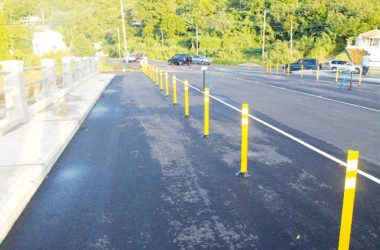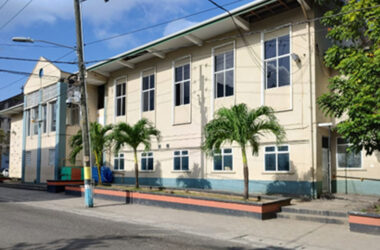SAINT Lucia is visited annually by hurricanes, heavy rainfalls, floods all of which have caused costs in the millions of dollars to be incurred, loss of lives and much damage to movable and immovable property. Every year the same warnings are repeated when faced with the aforementioned weather patterns.
This year is no exception. Saint Lucians are once again being told to be ready for hurricanes, what to stock up on, where the hurricane shelters are, the need to move to higher ground if they live in low-lying areas prone to flooding, etc., etc.
And as usual not many people take heed of these messages, even though there has been an increase in the destructive nature of natural disasters in recent times.
The nonchalant attitude on display by most Saint Lucians to warnings about the destructive nature of a hurricane can be seen in the Government of Saint Lucia too.
Years ago, there was talk about the implementation of a National Building Code for Saint Lucia, prompted not solely as a result of an increase in the destructive nature of natural disasters but also by spontaneous developments in several disaster-prone areas of the country.
Saint Lucia does not have a national Building Code of its own but rather is part of a harmonised OECS Building Code. However, this has not stopped unplanned structures going up all over the country, despite efforts of the Physical Planning, Housing and Urban Renewal Ministry to curb this unsound practice, which puts lives and property at risk whenever a hurricane or prolonged heavy rains hit.
In this season of heavy rains and hurricanes we once again have to remark that we have yet to see a determined effort on the part of the government to wipe out the careless nature of too many Saint Lucians when it comes to home construction. We have been informed that while government has stopped the construction of structures in many places, and has taken some people to court for not following construction standards and building structures that fall below the Building Code of the OECS, the number of unplanned structures dotting the country still continues to increase.
This has been a perennial problem, one that successive governments seem unable to rein in. Bearing in mind that the construction of unplanned structures by Saint Lucians usually ends up costing government more in the long term, we find it somewhat bewildering that not much effort is being put into enforcing that structures being built are built to construction standards as indicated by the harmonised OECS Building Code.
Or could it be that much is being done by government unbeknownst to us?
What we do know is that many houses, generally owned or occupied by individuals or couples wanting to have a roof over their heads, who are barely getting by, are sited in gullies or in flood plains and are especially vulnerable to floods caused by high rainfall resulting from the frequent tropical depressions and hurricanes.
We reiterate that presently we are in the hurricane season, and while successive governments have recognised that the damage caused by hurricanes and tropical depressions affect the less well-off persons to a greater extent than the middle class, it is difficult for us to accept that they are doing the best they can for the people who need the most help. We would like to see forcefulness in government in ensuring that all structures, buildings are constructed in a manner that can stand against natural hazards. This may not be popular, but is responsible.
We are of the firm view that despite the large amount of informal housing present in Fair Helen today, that tide can be turned if Saint Lucia doggedly persists in enforcing building codes and guidelines as determined by the harmonised OECS building code.
By consistent encouragement of houseowners and occupiers to improve their housing to the minimum standards of safety and structural integrity, Saint Lucia will find itself more resistant to hurricanes and tropical depressions sooner rather than later.














YES, LIVES ARE AT RISK YOURS:
Back in the late fifty’s, what is considered a modest home of three rooms total, was considered to be a mansion to the average citizen, most people did not need a permit to build, and most houses were constructed with wood, meaning boards posts, etc., lately the introduction of cement sand and stones were introduced to build a more solid structure, again no permit was asked of given.
It was very difficult to topple down that kind of structure, for many of the foundations of the houses were grounded on the ground two feet high, the indigenous people took pride in constructing a concrete house, in those days a house of this kind shows the importance and wealth of the individual, again no government involvement at least not that I know of.
Policing or Intervening in the building of those low-structure buildings was a burden the government rather not interfere with, monitoring and policing this whole affair was taboo and too costly for the undertaking of private ownership homes, the government rather just let it slide, yes slide.
This started the lack of interest by the government until this day, it must be noted that in today’s building structure beginning with the hotels and many other tall buildings, the need for preventative measures, should be paramount, securing a coded blueprint to build, should be mandatory and vitally important, to the benefit of all citizens.
Saint Lucian has emerged in competition with the modern world, in the high-rise homes, AND SURELY THE DESTRUCTION OF THOSE HIGH-RISE BUILDING, when it comes crashing down, will cause major destruction to the neighborhood, but don’t take my word for it, Saint Lucians are like that, they got to see to believe. Don’t listen to me but for the sake of fewer casualties, when any one of that tall uncoded structures toppled down will cause mayhem and loss of lives, heed the warning to do the right thing, you government ministers, or you may shortly, whichever ruling party will regret not making the effort to update structural reformation.